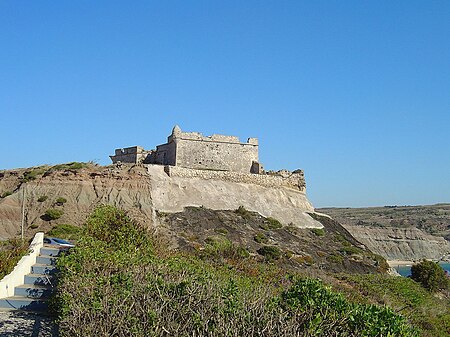Fort of Paimogo
1674 establishments in PortugalCoastal fortifications in PortugalForts in PortugalLiberal WarsLisbon ... and 4 more
LourinhãNational monuments in Lisbon DistrictPeninsular WarPortuguese Restoration War

The Fort of Paimogo, also known as the Fort of Our Lady of the Angels of Paimogo (Portuguese: Forte de Nossa Senhora dos Anjos de Paimogo), stands in a dominant position on Paimogo beach near the town of Lourinhã, Lisbon District in Portugal Constructed in 1674, it ceased to serve a military function in 1834 and is now under threat from coastal erosion. The fort presents an almost unique example of a fort from that period that has not undergone subsequent modification.
Excerpt from the Wikipedia article Fort of Paimogo (License: CC BY-SA 3.0, Authors, Images).Fort of Paimogo
Estrada do Paimogo, Lourinhã e Atalaia
Geographical coordinates (GPS) Address Website External links Nearby Places Show on map
Geographical coordinates (GPS)
| Latitude | Longitude |
|---|---|
| N 39.287222222222 ° | E -9.3405555555556 ° |
Address
Forte de Paimogo (Forte de Nossa Senhora dos Anjos de Paimogo;Forte no lugar de Paimogo;Forte da Lourinhã)
Estrada do Paimogo
2530-320 Lourinhã e Atalaia
Portugal
Open on Google Maps




